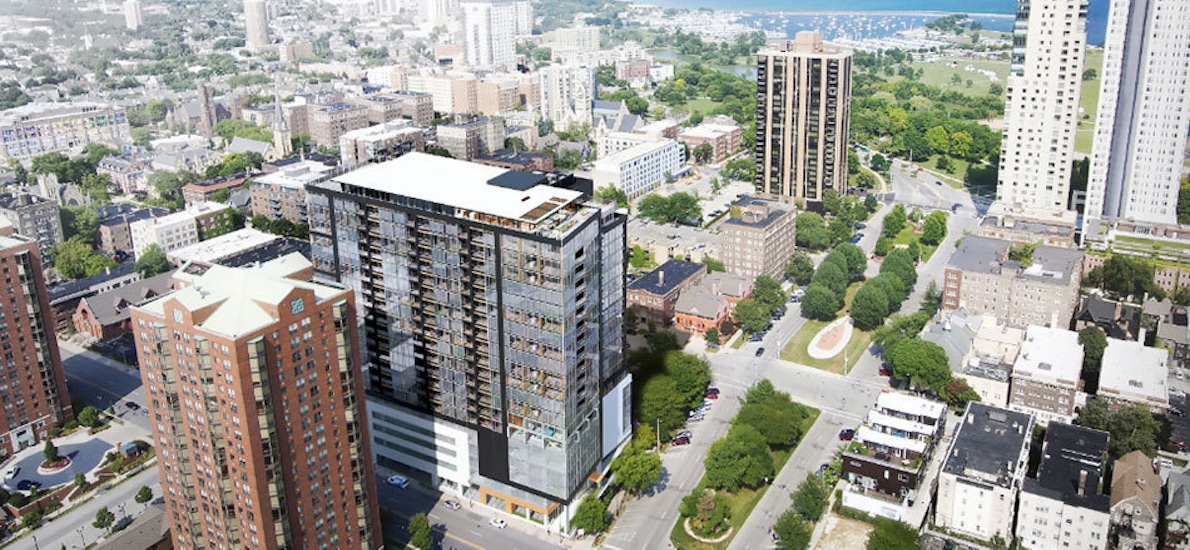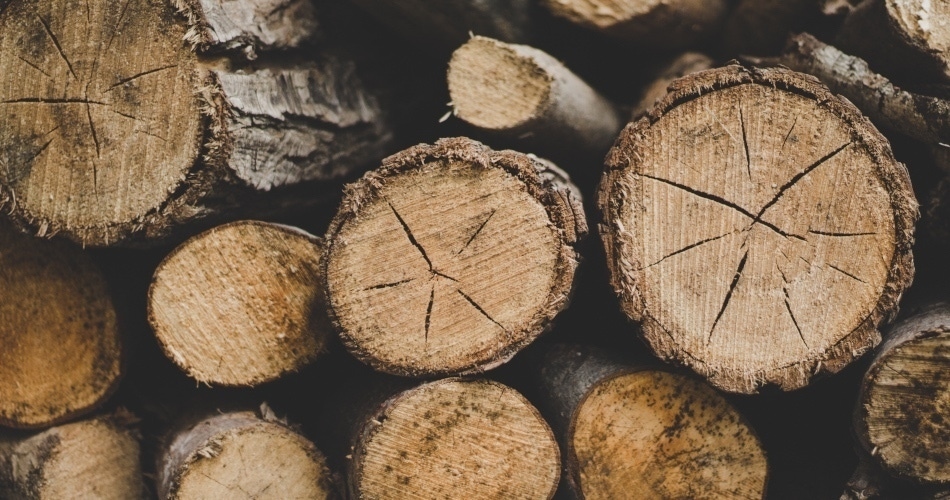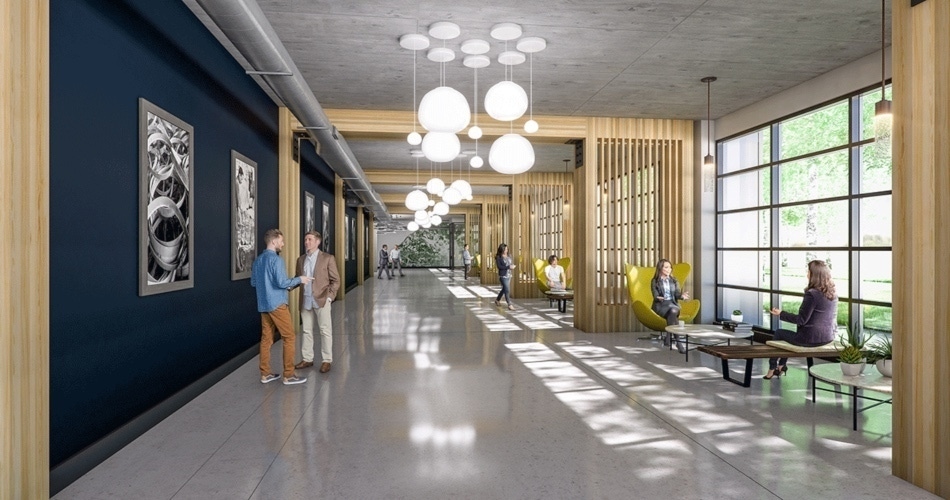
We explore innovative mass timber techniques, along with 4 mass timber projects that are changing commercial real estate in America right now.

We explore innovative mass timber techniques, along with 4 mass timber projects that are changing commercial real estate in America right now.
Wood has been the backbone of many construction projects from our earliest days, for framing, support, foundational and purely aesthetic functions. Abundant in supply and limitless in its beauty, it has been a valuable resource for centuries. However, it took somewhat of a backseat once concrete and steel became the darlings of the construction industry.
Recently, new building methods and research have prompted a resurgence in the usage of wood. Mass timber construction has been popular in Europe and Canada and is beginning to see a rise in popularity in the United States. These projects are both aesthetically pleasing and highly functional, which has led to their increasing prominence. Once a rarity in the United States, but the trend has taken root and is growing at a noticeable pace. Though mass timber projects are not abundant across the nation, they are beginning to break ground in a few major cities.
Those responsible for the humble beginnings of wood – Neolithic longhouses and pioneer log cabins, churches, and schoolhouses – would likely not expect to see the heights and mass these projects buildings are reaching today. The sky's the limit as far as these mass timber structures are concerned.
So, why mass timber? There are a number of reasons it is used in place of, or in conjunction with, other traditional building materials.

For starters, project timelines for mass timber buildings are generally shorter than concrete or steel buildings. The materials for these buildings are cut and prefabricated off-site. Once they arrive, they are ready to be assembled and locked into place, which cuts construction time down considerably. The assembly requires fewer workers on hand as well. According to a study conducted by ThinkWood, mass timber buildings are approximately 25 percent faster to construct and require 90 percent less construction traffic, as there are fewer materials needed to be made onsite.
Perhaps one of the most surprising elements of mass timber projects is the light environmental impact. Building with wood may not sound eco-friendly, as deforestation stands as a great threat against many of the world’s ecosystems, but mass timber manufacturers and suppliers are Forest Stewardship Council certified. Essentially, any timber that is provided is being replenished at a proper rate. Shifting resources towards the growth of forests, rather than the energy-intensive process of creating concrete and steel, has a greater, positive environmental impact.

There is no more sustainable nor responsible way to build that with mass timber, said Tim Gokhman, director of New Land Enterprises. We recently had him on our Transforming Cities podcast (he’ll be on season three, out this summer), where he spoke about mass timber and New Land’s plans for its upcoming project.
Carbon plays a role in the positive environmental impact mass timber has as well, Gokhman pointed out. Wood has a negative carbon footprint, so even if a tree is cut down, the carbon it took in remains. Planting a tree in its place sequesters double the carbon.
Another seemingly unlikely element of mass timber is its fire resistance. A multiple-storied timber structure might seem like a tremendous hazard, but it’s quite the opposite. Steel fails under enough heat in a fire. However, mass timber is dense and tightly packed enough so that its exterior chars, but does not penetrate and burn through. Ironically, a building with exposed steel will not pass code, but a building with exposed wood will, Gokhman said.
In addition to the functional, practical elements of mass timber, there is the matter of its aesthetics. The simple, yet universal beauty of wood needs no explanation. It gives users of the space a connection to natural elements, which has both calming and restorative effects. It also provides a more relaxing atmosphere for office users, which can increase productivity and general happiness.
Given all that mass timber has to offer – efficiency, beauty, and environmental impact – it’s not surprising that this building type is beginning to pick up speed in the United States. The idea of a wooden high rise is not so unbelievable as it would have once been, as engineers, architects, and builders learn how to use the material so it’s fire retardant and extremely stable. A future skyline that includes timber is both an exciting and attainable idea, and not quite the fire hazard one might think it would be.
As these projects continue to break ground and seek new heights, take a look at some of the projects in the United States we’re most excited about.
Podcast guest Gokhman’s project, Ascent MKE, is based Milwaukee. The 21-story apartment tower will be about 400,000 square feet and 70 percent timber upon completion. In fact, this will be the Western Hemisphere’s tallest mass timber project.
“Milwaukee has never seen anything like this before,” Gokhman said on the podcast. There aren’t many mass timber buildings in the country, particularly tall ones.
Ascent will be a striking timber tower right near Milwaukee’s Lake Michigan, creating a beautiful contrast between the lake, and its glass and wood. Boasting the title of “tallest in the Western Hemisphere” doesn’t exactly hurt, either. Not only will this project bring an architectural spotlight to Milwaukee, but its carbon sink impact will have the equivalent of taking 2,100 cars off the road per year.
The project’s architect is Korb and Associates Architects.

While Milwaukee is reaching towards the clouds with mass timber, a project in Denver is creating a natural, warm office space. Called Platte Fifteen, the five-story office and retail project will be Denver’s first cross-laminated timber project.
OZ Architecture designed the project, and one of its architects, Joe Anastasi, said that mass timber projects are a sustainable construction solution that provides a more natural authentic design for the interior built environment.
“For Platte Fifteen, cross-laminated timber was utilized to create a unique office space that utilizes honest and warm materials in simple well-detailed methods,” he said. “The wood timber structure juxtaposed with other exposed materials in an open office plan is a special solution to the modern workplace.”
The developer of the project is Crescent Real Estate.

Hines Corporation has a series of timber office buildings, called T3; timber, transit and technology. Its latest one, T3 West Midtown, is wrapping up construction in Atlanta. The joint venture project with Invesco Real Estate will be seven-stories and 205,000 square feet.
Similar to Platte Fifteen, T3 West Midtown will give office tenants an interior that exudes warmth and natural elements, rather than whitewashed walls, and stucco ceilings with fluorescent lighting. Though timber framed office buildings are far and few between, many developers that utilize the material expect significant interest from tech users, for its new age feel but restorative effects on office users.
This project follows closely on the heels of Hines’ first T3 project in Minneapolis, which was then the largest mass timber building in the United States upon its November 2016 completion.
Hartshorne Plunkard Architecture (HPA) and DLR Group are both architects associated with the project.

The largest cross-laminated timber project is currently under construction at the University of Arkansas. Upon completion, it will be over 200,000 square feet, five stories, and will have over 368 rooms, according to the Nabholz corporation.
This will be the nation’s first large-scale mass timber project and will consist of a series of interconnected buildings. Not only is the size of this project impressive, but it’s worth noting that this project is designed with students in mind. With wood interiors, natural lighting and a tree-lined landscape outside, the creative living and learning space will likely have a positive impact on its users.
The architects associated with this project are Modus Studio, Mackey Mitchell Architects, and Leers Weinzapfel Associates
According to Mackey Mitchell Architect's Greg Frankenfeld, mass timber is utilized for the structural frame of the structure, but is highlighted and left exposed as much as possible within the building to emphasize and show it off. Frankenfeld said that the new residence hall’s use of mass timber "enhances the living-learning community which is part of the space program of the building, providing a tangible example of its sustainability, design, and assembly/construction." Overall, the use of this material in this project delivers educational, environmental, and economic value, he said.
Mass timber projects are beginning to transform cities, in the way we think about projects, design, build, and use them. Tim Gokhman spoke of it on our Transforming Cities podcast, where we frequently feature guests in the commercial real estate space, who have unique perspectives on compelling topics.
With an influx of people returning to the urban spaces, city life is transforming. Innovations in design, construction, and technology are reshaping the places where we live, work, and play. As these changes continue, we talk to some of its leaders on this podcast to get a wide range of perspectives on how their projects are contributing to this transformation.
You can find more of those podcasts here.

Subscribe here to get our short and sweet monthly newsletter!